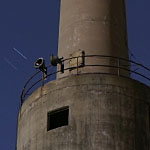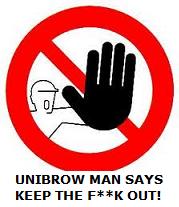 |
 |
|
UER Store
|
|
sweet UER decals:

|
 |
 |
|
Activity
|
|
648 online
Server Time:
2024-05-08 13:52:21
|
|
 |
 Ben
  
Noble Donor
Location: Mojave Desert
Gender: Male
 | |  | |  | Decoding Pin Tumbler
< on 10/27/2003 4:49 AM >
|  | | | If you have access to both sides of a lock, and plenty of time to take it apart and put it back together, is it within the realm of possibilty to decode the pin positions so that you can make a key?
|
|
Macsbug
  
Noble Donor
Location: St. Paul, MN
Gender: Male

Safety First!
 | |  | |  | Re: Decoding Pin Tumbler
<Reply # 1 on 10/27/2003 4:58 AM >
|  | | | I dont know if this method actully works, but if so, it might be easier then dissasembling and making a key.
1. You get some soot on a key blank from a candle or lighter.
2. Put the key in the lock, and jiggle.
3. Take key out, and file down just a little where the soot has mostly came off.
4. Repeat from step 1 until the key works for the lock.
Once again, I am not sure if this method actually works, but if so, it might be easier then some method based on dissasembling the lock.
"Believe those who are seeking the truth; doubt those who find it." |
|
MacGyver
 
Location: St Paul, Minnesota
Gender: Male

"Someone go find me a paperclip, a D-cell battery, and a cheese grater"
 | |  | Re: Decoding Pin Tumbler
<Reply # 2 on 10/27/2003 4:59 AM >
|  | | | absolutely. If you can take it apart, just measure the distances from the correct pin position to the floor of the keyway with a micrometer. Find the right key blank and the distances along the blank to file, then make your key.
edit:
measure the pin height (A) and the distance from the outside of the core to the bottom of the keyway ( . Subtract to get the proper height of that position on the key. Measure the distance along the key off of the face of the core or something. When filing the key, mimick the way a machine-made key looks to kake sure you don't get the key stuck in the lock or something. . Subtract to get the proper height of that position on the key. Measure the distance along the key off of the face of the core or something. When filing the key, mimick the way a machine-made key looks to kake sure you don't get the key stuck in the lock or something.
Another option is to recore the lock, leaving only one or two sets of pins. This would make it very easy to pick, but having a key amongst your keychain is far less suspicious than carring something to pick it with.
[last edit 10/27/2003 5:15 AM by MacGyver - edited 2 times]
Like a fiend with his dope / a drunkard his wine / a man will have lust for the lure of the mine
"If you are not part of the solution, you are not dissolved in the solvent." |
|
Servo
   
 | |  | Re: Decoding Pin Tumbler
<Reply # 4 on 10/27/2003 5:48 PM >
|  | | | Posted by Freak
Here's an article on decoding master-keyed systems,
|
Since I've had the joy of jumping through the 5 hoops it takes to finally find the research paper, here's a link to the actual document:
http://www.crypto.com/papers/mk.pdf
[last edit 10/27/2003 5:49 PM by Servo - edited 1 times]
|
|
Mister Hobbs

 | |  | Re: Decoding Pin Tumbler
<Reply # 5 on 10/27/2003 5:53 PM >
|  | | | Matt Blaze has a rather cool website with some interesting and very accurate information on it with regard to locks, etc.
|
|
Ben
  
Noble Donor
Location: Mojave Desert
Gender: Male
 | |  | |  | Re: Decoding Pin Tumbler
<Reply # 6 on 10/28/2003 12:01 AM >
|  | | | Thanks for the links. I was hoping for some hands on advice, but I guess it's not the most common tasks.
Now to hunt down one of my Yale locks, to see if it's actually possible to take it apart.
|
|
Mister Hobbs

 | |  | Re: Decoding Pin Tumbler
<Reply # 7 on 10/28/2003 12:24 AM >
|  | | | Ben,
Do you have a Yale padlock or a mortise cylinder or what? They're easy to take apart, you just might need some minimal tools available online. If you have a key, you don't need curved shim stock. Basically, if you want to do it as pain/hassle - free as possible, you need curved shim stock if you don't have a key and even if you do, it's a good thing to have...and you need a plug follower suitable for that size of plug and a pair of pin tweezers. Regular, good tweezers will do in a pinch but if you are really interested in this sort of thing, get the ones designed to re-pin cylinders. The ends are grooved for pins. HPC makes a good plug follower set.
I can tell you how to take it apart, etc.
Can pictures be posted on this forum?
|
|
MacGyver
 
Location: St Paul, Minnesota
Gender: Male

"Someone go find me a paperclip, a D-cell battery, and a cheese grater"
 | |  | Re: Decoding Pin Tumbler
<Reply # 8 on 10/28/2003 12:53 AM >
|  | | | click the "attach an image" button located next to the "post reply" button at the bottom of the reply text box. You can upload .jpgs and .gifs under 100k and have them automatically show up in the post in the form of a thumbnail link.
example: what happens when you live in a dusty dorm room
Like a fiend with his dope / a drunkard his wine / a man will have lust for the lure of the mine
"If you are not part of the solution, you are not dissolved in the solvent." |
|
Ben
  
Noble Donor
Location: Mojave Desert
Gender: Male
 | |  | |  | Re: Decoding Pin Tumbler
<Reply # 9 on 10/28/2003 1:52 AM >
|  | | | This is a mortise cylinder situation. I appreciate any pictures or text on how to take it apart properly, as well as tool tips. I have two key-in-knob types to practice on, but I could get a regular mortise.
|
|
Mister Hobbs

 | |  | Re: Decoding Pin Tumbler
<Reply # 10 on 10/28/2003 12:32 PM >
|  | | | Krazy,
Gotcha and thanks!
Dude, you need a Dirt Devil or something. 
Posted by Ben
This is a mortise cylinder situation. I appreciate any pictures or text on how to take it apart properly, as well as tool tips. I have two key-in-knob types to practice on, but I could get a regular mortise.
|
Ben,
There are three basic "tail" areas that you are going to find with mortise type cylinders. All have the tailpiece or cam to operate the rest of the lock, I'm speaking about the way the plug is secured in the rear to keep it from pulling out when you insert the correct key and then pull the key out.
You have some cams/tailpieces that have two screws which may be Standard or Phillips, you have one that has a spring steel half moon clip and then you have the type that has like a screw down collet, for lack of a better descriptor and I cannot remember the "proper" name for it at the moment. But if that is what you end up with, you'll know it when you see it.
The spring steel clip can be removed with specially - designed, small pliers purchased for the task or you can simply use a small, Standard screwdriver tip. Pry off carefully, if old, they can break. If stressed, they can break.
Always pay careful attention to what you are doing so you do not confuse parts, obviously. Both LAB and A-1 make small pin trays, in a pinch, you can use an ice cube tray.
If you have the correct key for the mortise cylinder and you have the tailpiece/cam removed, insert the key into the plug and turn it off-center. If the key insertion is 12 O'clock, you can turn it to about 1 or 2 O'clock, easy...
Place the plug follower at the back of the plug and this follower MUST always contact the rear of the plug. If there is a moment where contact is lost, a gap is created which can allow upper (top) pins (drivers) and springs to slip down and foul up the entire procedure. Slow and methodical, push the plug out of the lock with the follower.
You should now have a shell with drivers and springs trapped above the plug follower and a plug in hand with the lower pins in it.
If you do not have the correct key, you can use a suitable key blank for that type of lock you have or a simple hook pick and curved shim stock. Remove the tailpiece/cam as before, insert the shim stock at the rear, at the shear line. Manipulate the rearmost pin with slight pressure on the shim until the shim slips in. You will feel this, repeat until you feel the plug want to come out. Using a key blank to do this is just a bit different. Insert the key blank all the way, insert the shim and them slowly pull the key blank out as you maintain pressure on the shim, you will feel it slip...repeat.
Using the last two methods will only give you problems if you run into mushroom, spool or serrated pins, then you have to have a little more patience, but you will still get them. Using the key blank is sometimes easier than the pick in that case.
Re-loading is where you need to have the appropriate tweezers and some more patience. We can handle that later.
For a very good "training lock," get a Medeco, preferably one with a proper key, you don't want to screw around with one that does not have the correct key...
Remove the tailpiece/cam and insert the proper key. Using an appropriate plug follower, remove the plug with lower pins intact in the plug.
Remove the sidebar and associated springs that "power" the sidebar.
Using an appropriate size Allen Wrench, remove the caps on top of the lock that retain the spring and drivers in each pin stack. Keep everything in order and don't tip the plug over, you want to make sure your key still works, etc.
Find the pin stacks that have the mushroom drivers, remove those pin stacks entirely, spring, mushroom driver and any master pins as well. You might want to go further and remove a couple more pin stacks...
You will now have an incredibly good training lock that will really test your skills because there is little tolerance to exploit in it. Truly a lock that you should load with two pin stacks to start out. Pin rotation won't matter anymore because you will have removed the sidebar and associated hardware. Once you get better, load one mushroom driver in one of the two pin stacks. When you can reliably pick that, load two mushroom drivers in two pin stacks, etc., work your way up to fully loaded with two mushroom drivers but without the sidebar assembly.
The pins in Medeco are larger than in Best, Yale, Corbin, Russwin, etc., so that can give you a different feel, so the Medeco training lock should never "replace" using other cylinders.
|
|
Ben
  
Noble Donor
Location: Mojave Desert
Gender: Male
 | |  | |  | Re: Decoding Pin Tumbler
<Reply # 11 on 10/31/2003 3:16 AM >
|  | | | Wow, thanks for all that. I just noticed that my two knobs are Best, so I'll probably get a Yale mortise to practice on, since those are the two types I see the most.
Do you know of any good books on general locksmithing, or is it more of an apprenticed skill?
|
|
Mister Hobbs

 | |  | Re: Decoding Pin Tumbler
<Reply # 12 on 10/31/2003 11:10 AM >
|  | | | Ben,
Something like "The Complete Book of Locks and Locksmithing" found in most public libraries should show you a good bit. But I would hardly call it "complete." But for your purposes, it will be OK.
|
|
Dr Lockman

Location: Nowhere, yet everywhere
 | |  | Re: Decoding Pin Tumbler
<Reply # 13 on 11/27/2003 9:00 PM >
|  | | | Posted by Ben
Wow, thanks for all that. I just noticed that my two knobs are Best, so I'll probably get a Yale mortise to practice on, since those are the two types I see the most.
|
BEST locks require special tools to disassemble and decode. In fact,
you need a special key, called a "control key", to even get the
cylinder out of the lock. (Most pin tumbler cylinders can be
removed with nothing more than a screwdriver once the door is open
and unlocked, but not BEST locks.)
See http://www.crypto.com/photos/misc/sfic/ for photos of BEST locks
and the required tools.
You can use the technique in the article on decoding master keys on
BEST locks without disassembling them, though.
Dr Lockman
[last edit 11/27/2003 9:27 PM by Dr Lockman - edited 1 times]
|
|
|
|
All content and images copyright © 2002-2024 UER.CA and respective creators. Graphical Design by Crossfire.
To contact webmaster, or click to email with problems or other questions about this site:
UER CONTACT
View Terms of Service |
View Privacy Policy |
Server colocation provided by Beanfield
This page was generated for you in 140 milliseconds. Since June 23, 2002, a total of 741034551 pages have been generated.
|
|






 . Subtract to get the proper height of that position on the key. Measure the distance along the key off of the face of the core or something. When filing the key, mimick the way a machine-made key looks to kake sure you don't get the key stuck in the lock or something.
. Subtract to get the proper height of that position on the key. Measure the distance along the key off of the face of the core or something. When filing the key, mimick the way a machine-made key looks to kake sure you don't get the key stuck in the lock or something.



